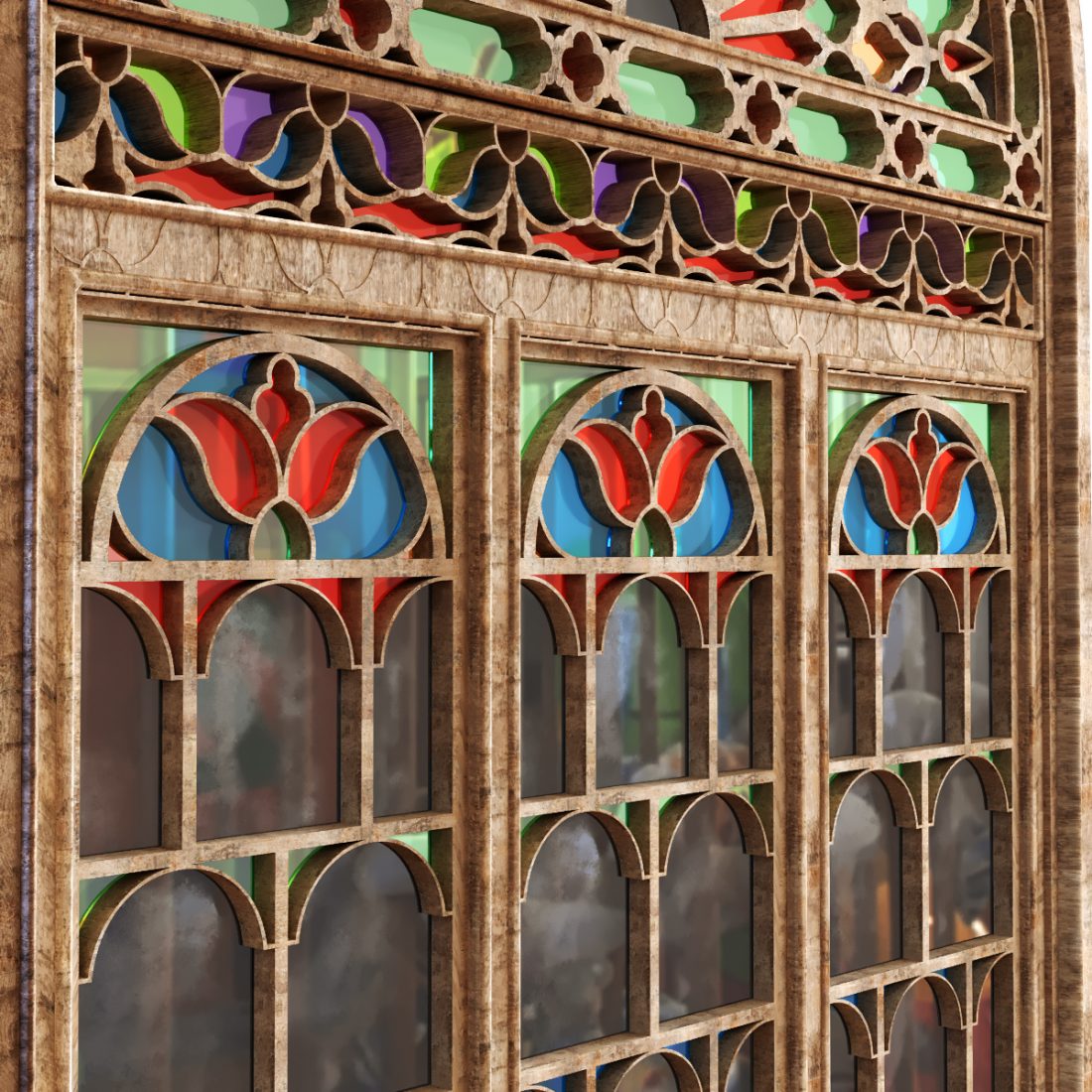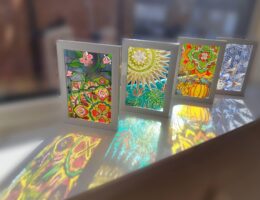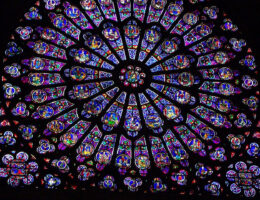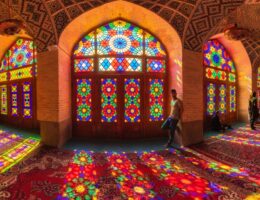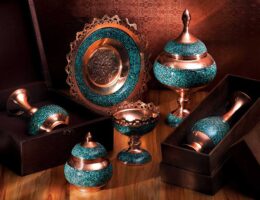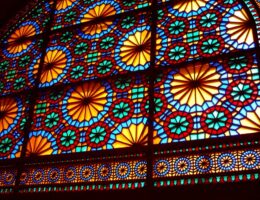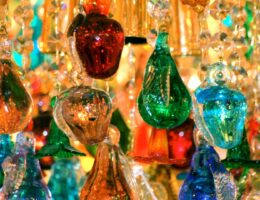IRAN ART EXHIBITION: GEREH-CHINI & OROSI-SAZI TWO KINDS OF IRANIAN STAINED GLASS WORK
Two kinds of stained glass work became common in Iran: Gereh-chini (decorative wood lattice) and Orosi-sazi (sash-style).
This is one of the branch of architectures and traditional tiling. Gereh is an Islamic decorative art form used in architecture and handicrafts (book covers, tapestry, small metal objects), consisting of geometric lines that form an interlaced strap-work. In Iranian architecture, Gereh-chini patterns were seen in banna’i brickwork, stucco, and mosaic faience work. Gereh has been defined as “geometric (often star-and-polygon) designs composed upon or generated from arrays of points from which construction lines radiate and at which they intersect.
Gereh is the Persian word for “knot” and refers to the complex system of geometric patterns that emerge upon the specific arrangement of 5 fundamental tiles: the decagon, the bowtie, the rhombus, the hexagon and the pentagon. Medieval Islamic designers used this patterning system to form elaborate and breathtaking architectural pieces at least 500 years before Western mathematics was able to define the technique. This art need to spending more time and also more money, so the Muslims try to decorate their holy shrines by that. The geometric design “Gereh”, was widely used to decorate Islamic buildings.
The set of five Gereh tiles decorated with lines that fit together to make regular patterns first appeared about 1200 AD, a time when Islamic mathematics was flowering. The designs grew increasingly complex, and by the 15th century produced near-perfect Penrose patterns found on the Darb-i Imam shrine in Isfahan, Iran.
Sash-Window Making (Orosi-Sazi)
The Orosi Iran is a typical architectural element. It is a lattice window. In this type of art is not operated in any nail or glue: all the images, and the figures are obtained by means of the connection of small wooden junctions, operated with the interlocking male and female. The Orosi have generally rectangular shape; the upper part (located under the roof), adorned with pieces of colored glass, was completed in the usual rectangular shape, half-moon-shaped or barrel-shaped. This type of door or window, widely distributed in tropical areas, had the purpose of regulating and mitigate the sunlight in those particularly exposed homes. However, the use of this art was more or less even spread to other areas.
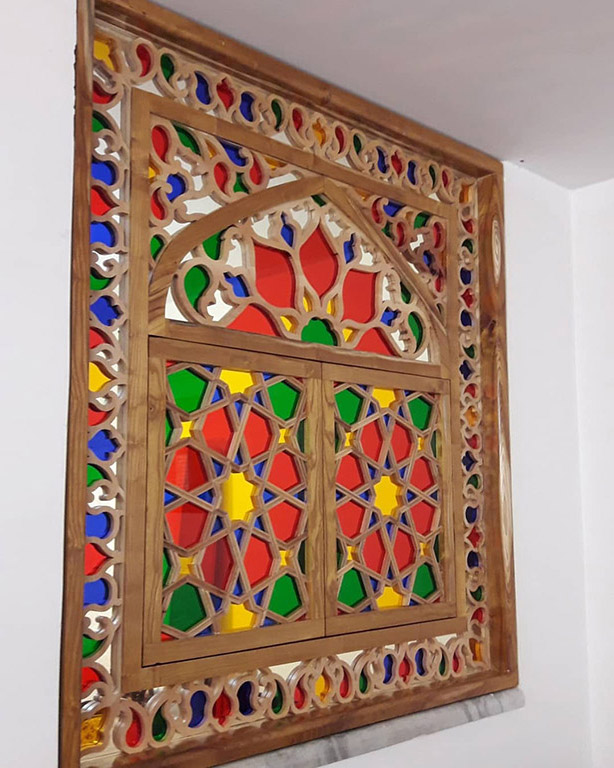
IRAN ART EXHIBITION: The best examples of the Gereh-chini and Orosi of this art are the ancient homes of Isfahan, Kashan, Shiraz and Yazd include the Chehelsotun, Hasht-Behesht (Eight Heaven), Alam’s House, Sheikh Al-Islam House, Sookias house, Tabatabai’s house, Abbasian house, Borujerdi’s house. Nowadays, Sanandaj is to hold the primacy of this art in the western part of the country.
Nasir al-Mulk Mosque where frames of wood and panels of glass are set next to each other in mostly geometrical designs. The refraction of light through the windows creates a stimulating and beautiful atmosphere.
Function of the reticular surface of the Orosi windows:
Orosi windows reduces the power of the radiation and the heat of the sun, no less no more, allows the view of outer space, gives beauty to the facade of the building and protects the privacy of private spaces. From the psychological point of view, the various colors of the glass in the Orosi windows and the creation of their colored lights on human impact, which each color next to the other color neutralizes the effect and adjusts its appropriate amount. Most of the colors used in artistic glass are azure colors of red and green, each of which alone has a distinct psychological impact.
The surface of the Orosi windows is arranged using a variety of different rows of elements, with colorful and simple glasses, and create innovative combinations, making the harmony between these geometric grids and colored lights create a charming beauty.
The colored glasses of the Orosi windows create colorful lights, preventing and disturbing insects from the outer space of the rooms (the colored glass, giving rise to colorful lights, stray and repel insects).
